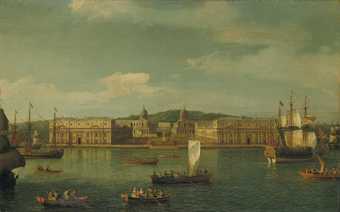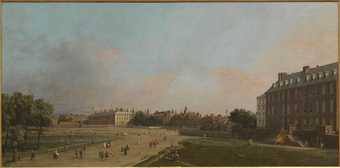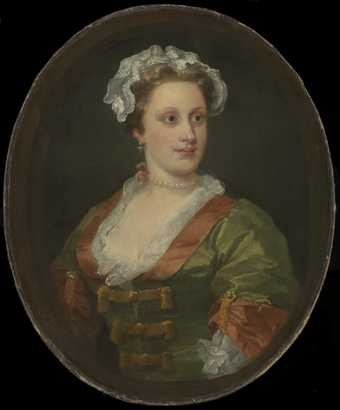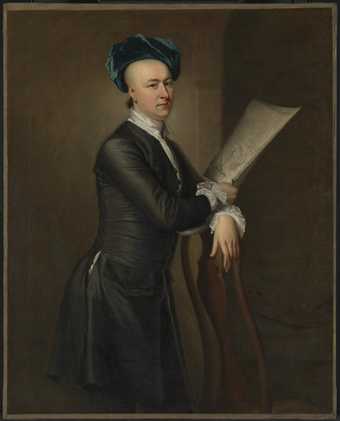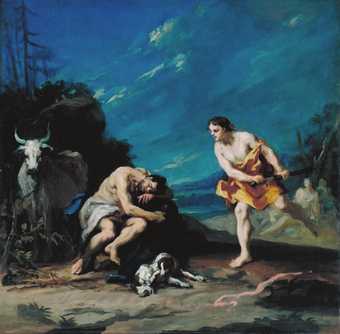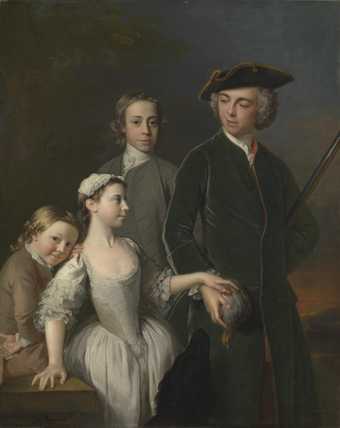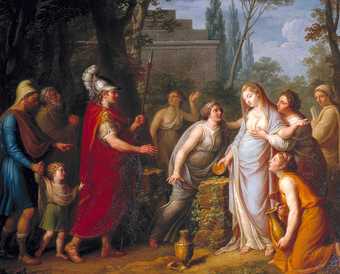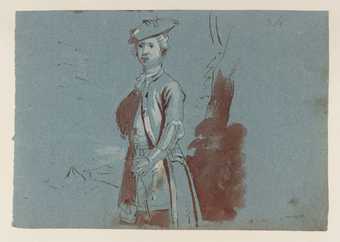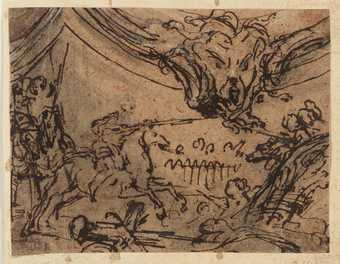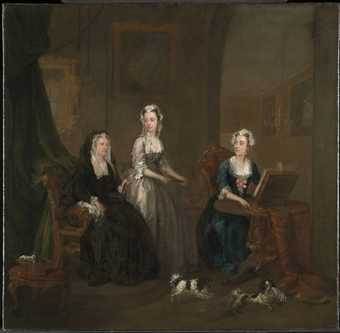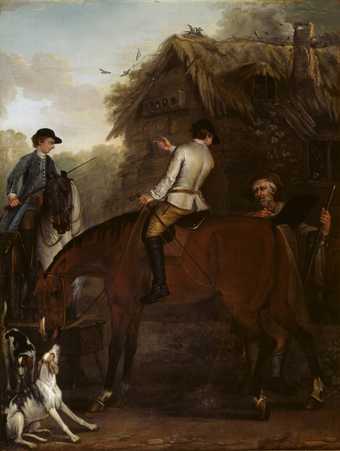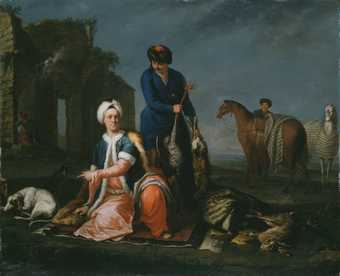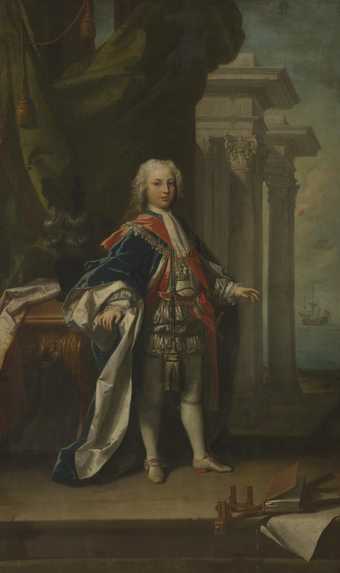
Not on display
- Artist
- Giacomo Amiconi 1682–1752
- Medium
- Oil paint on canvas
- Dimensions
- Frame: 2459 × 1594 × 48 mm
- Collection
- Tate
- Acquisition
- Accepted by HM Government in lieu of inheritance tax and allocated to Tate 2019
- Reference
- T15455
Summary
This is one of two grand full-length society portraits by Giacomo Amiconi (also known as Jacopo Amigoni) which, though not definitely conceived as a pair, have a long history of being displayed together. Both were commissioned by Frederick, Prince of Wales (1707–1751), with whose patronage the artist was particularly associated. This one shows Frederick, Prince of Wales himself, and was commissioned by the sitter in 1735 as a gift for Charles, 2nd Duke of Dorset, who was his close political ally. The other portrait is of the Prince of Wales’s younger brother, William, Duke of Cumberland (1721–1765, Tate T15456). Here, the Prince is shown standing in the robes of the Order of the Garter, his plumed hat on a table to the left and an imaginary architectural colonnade in the background. The portrait of the Duke of Cumberland also shows the sitter standing in his Garter Robes, against a lavish curtain, with Corinthian columns and a view to ships beyond.
The portrait of Frederick, Prince of Wales is mentioned in the household account books of the Prince and Princess of Wales as costing £63. It was one of three portraits of the Prince commissioned by him from Amiconi as gifts for personal friends. Another full-length portrait, showing him in court dress, was intended for the Hon. Mrs Vane, his mistress; while the third portrait, a three-quarter-length, was a gift for George Bubb Dodington, later Lord Melcombe (Royal Collection, London). The portrait of Cumberland is not mentioned in the accounts but could have been commissioned at the same time, perhaps even by Dorset to create a pair to the portrait of the Prince.
The Prince of Wales was an enthusiastic and dedicated patron of the arts and formed an outstanding art collection; Amiconi was one of his favoured artists. A Neapolitan, but who had an international career, Amiconi worked in Venice and at the court in Munich before arriving in England in 1729, where he spent the following decade. His new international, fashionable elegance found much favour, both as a decorative artist for various aristocratic houses (see Amiconi’s Mercury About to Slay Argus 1730–2 [Tate T01299]), and as a portraitist, especially at court. Caroline of Ansbach, consort of George II, was also his patron, as was the Duke of Dorset, the recipient of this portrait of the Prince.
Further reading
John Woodward, ‘Amigoni as a Portrait Painter in England’, Burlington Magazine, vol.99, January 1957, pp.21–3.
Kimerly Rorschach, ‘Frederick, Prince of Wales (1707–1751) as a Collector and Patron’, Walpole Society, vol.LV, 1989–90, p.51.
Annalisa Scarpa Sonino, Jacopo Amigoni, Soncino 1994, pp.32–3.
Tabitha Barber
May 2018, updated April 2019
Does this text contain inaccurate information or language that you feel we should improve or change? We would like to hear from you.
You might like
-
Canaletto (Giovanni Antonio Canal) A View of Greenwich from the River
c.1750–2 -
Canaletto (Giovanni Antonio Canal) London: The Old Horse Guards from St James’s Park
c.1749 -
William Hogarth Lavinia Fenton, Duchess of Bolton
c.1740–50 -
Thomas Hudson Samuel Scott, the Marine Painter
c.1731–3 -
Giacomo Amiconi Mercury About to Slay Argus
1730–2 -
Colin Morison Andromache Offering Sacrifice to Hector’s Shade
c.1760 -
Giacomo Amiconi Portrait of a Man
date not known -
Hubert François Gravelot Border for Engraved Portrait by Houbraken: Henry, Prince of Wales
date not known -
John Wootton Viscount Weymouth’s Hunt: Two Hunt Servants on Hunters beside a Cottage
1733–6 -
John Wootton Life-Size Horse with Huntsman Blowing a Horn
1732 -
Giacomo Amiconi William, Duke of Cumberland
1735

